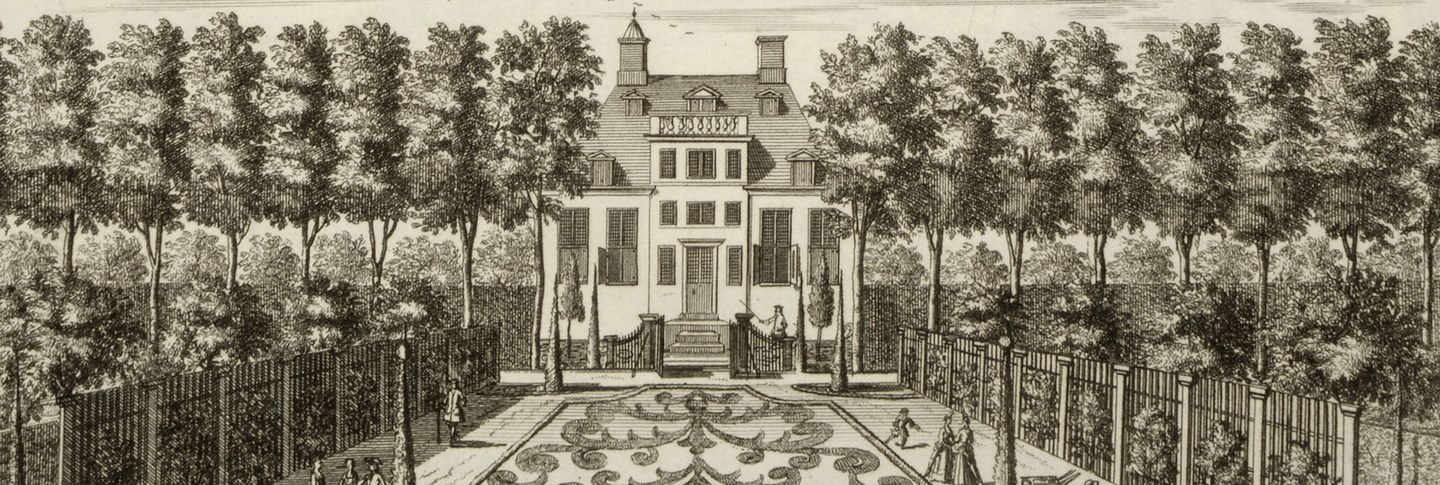With the establishment of the East and West India Companies, the fledgling Dutch Republic gained both wealth and power. As a result, the seventeenth-century Netherlands—and especially the province of Holland—saw an efflorescence of garden and villa culture. The construction of pleasure houses in the countryside contributed to the development of the classicizing Dutch baroque style in architecture. Although initially influenced by Italian Renaissance examples, gardens were now laid out according to a local interpretation of the classical principles—generally on a rectangular scheme bisected by the central axis. This axis would run perpendicularly to the center of the house, with the gardens largely divided into compartments and flanked by groves or canals. As the century progressed, Dutch garden design increasingly drew inspiration from France in its emphasis on perspectival geometry, without, however, losing its sense of enclosure. A selection of images from the Rare Books Library at Dumbarton Oaks gives us a glimpse into this unique chapter of garden history.
Bibliography
- De Jong, Erik. “For Profit and Ornament: The Function and Meaning of Dutch Garden Art in the Period of William and Mary, 1650–1702,” In The Dutch Garden in the Seventeenth Century, edited by John Dixon Hunt, 13–48. Washington, DC: Dumbarton Oaks Research Library and Collection, 1990.
This online exhibit was curated by Andrés Álvarez Dávila, 2017–2018 Dumbarton Oaks Humanities Fellow.









